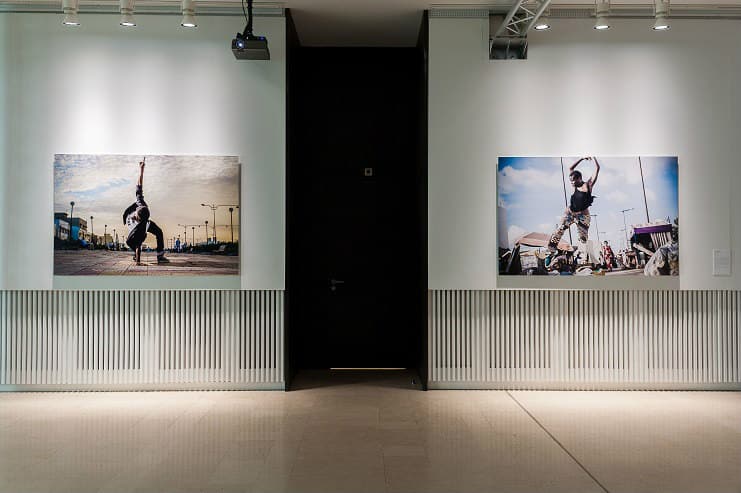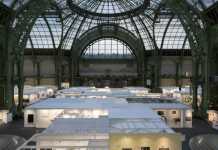“Holocaust and Comic Books” at the Holocaust Memorial – until October 30, 2017

Art Spiegelman’s Maus aside, the subject of Holocaust as represented in comic books and graphic novels has remained largely unexamined. Now a heartrendingly beautiful exhibition, “Holocaust and Comic Books” at the Holocaust Memorial (Memorial de la Shoah) in Paris, sheds new light on the often-overlooked representation of this historical tragedy in comics and graphic novels. The exhibition begins with the first eyewitness and victim testimonies of the genocide, including the bittersweet Mickey Mouse in the Gurs Camp, a handbound album by Horse Rosenthal while he was in the French concentration camps. It then goes on to map the gradual political, social and aesthetic changes in the depiction of the Holocaust with an exceptional selection of over 200 rare and original works spanning over a period of 75 years. These include the early anthropomorphisms and gingerly references to the Holocaust in superhero comics to the later use of graphic novels as a means to communicate and educate about the difficult issues of historical tragedies, identity and memories. It is a solemn, well-explained exploration of a subject and a medium quite frequently obscured or forgotten in contemporary sociopolitical and cultural discourse. Details>>
“21 Rue la Boétie” at Musée Maillol – until July 23, 2017

Based on the book My Grandfather’s Gallery: A Family Memoir of Art and War (originally published in French as 21 Rue la Boétie) by Anne Sinclair, the Musée Maillol exhibition traces the remarkable story of Sinclair’s grandfather, Paul Rosenberg (1881-1959). One of the most influential art dealers of the first half of the 20th century, Rosenberg was a friend and principal dealer of Picasso and brought many of the modern art masters, including Matisse, Léger, Braque and Marie Laurencin, to wider public attention. The exhibition recreates the history of 21, Rue la Boétie, Rosenberg’s family house and art gallery which once served some of the most prominent modern artists and was ironically occupied in 1941 to house the Institute for the Study of Jewish and Ethno-Racial Questions. On view are over sixty rarely seen works that mark the emergence of modern art and the shift of international art market from Paris to New York, but also a detailed section documenting ‘The Great Exhibition of Modern Art’, held at the same time as the exhibition on what was considered as ‘degenerate art’. Details>>
Stay updated. Follow us on Facebook!
“Ciao Italia!” at the National Museum of the History of Immigration – until September 10, 2017

With Ciao Italia!, the National Museum of the History of Immigration (Musée national de l’histoire de l’immigration) retraces the path of Italian immigration in France starting from the year 1860. Spanning across a century, the exhibition does not merely emphasise on the Italian integration and contribution to the industry and culture in France – automobiles, cinema, arts, sports, commerce and industry – but also deals with difficult issues of exclusion, discrimination, rejection, xenophobia and violence (such as during the massacre of Aigues-Mortes in 1893) faced by Italian migrants in France. With some 400 exhibits on display – artworks, objects, archival documents, posters and films – the exhibition is a richly documented survey of one of the greatest waves of immigration to France. The museum is situated on the edge of Bois de Vincennes and is housed in the Palais de la Porte Dorée, also home to the Paris’ tropical aquarium. Curiously enough, the building was used for the International Colonial Exposition of 1931, and its imposing facade, created by Alfred Janniot, is a sculpted eulogy to French colonial rule in Africa, Asia, the Antilles and Oceania. Details>>
“Rock the Kasbah!” at Institut des Cultures d’Islam – until July 30, 2017

courtesy the artist and Galerie Allen, Paris
and Anna Schwartz Gallery Melbourne.
British punk rock band The Clash’s wrote their cult song Rock the Casbah after Ayatollah Khomeini banned rock music in Iran. The song today is the inspiration behind Institut des Cultures d’Islam’s exhibition Rock the Kasbah!, which explores the effect music and sounds have on our bodies and minds. The exhibition brings together some highly engaging musical, art, photographic and film works by artists from Sub-Saharan Africa, South-East Asia, Europe, Middle-East and the United States in an attempt to examine music’s potential as an instrument of protest, its spiritual dimension and its capacity to make our bodies move. It also brings into perspective the Muslim practice of public diffusion of prayer sounds and the manner in which it influences individual and collective behaviour. Some highlights from the exhibition include Angelica Mesiti’s video of four women absorbed in a hypnotising ‘dance of the hair’ and Siaka Soppo Traoré’s photographs of break dancers frozen in mid-air. In a profound but disturbing video – This Lemon Tastes of Apple – shot in the streets of Sulaymaniyah in Iraqi Kurdistan, an unflinching Hiwa K plays harmonica in the face of a brutal attempt to repress a public demonstration. The exhibition is accompanied by several cultural events, concerts – Berber rock, Senegalese hip-hop, Palestinian rap – as well as conferences, shows, musical workshops and film screenings (the programme is available here). While you are there, do try the excellent food served in their cafeteria on Rue Léon and buy the honey from the hives on ICI Goutte d’or’s roof available in their boutiques. Details>>
Michel Journiac at Maison Européenne de la Photographie – until June 18, 2017

Michel Journiac was one of the key founders of the art corporel (body art) movement in France in the 1970s. Using body as the medium, Journiac’s work questioned prevailing notions of sexuality, identity, morality and the sacred. His works, convening gender, body, blood and religion, are by no means easy to look at and this is not an exhibition for those looking for beautiful, comforting art. But that exactly was the point of Journiac’s work produced in a post-1968 France, a period that saw the emergence of various countercultures and subversive art against cultural, religious, political and social ‘systems’. His series 24h de la vie d’une femme 24 hours in the life of an ordinary woman, where he poses as a working married woman is a biting satire on the gender stereotypes promoted by popular French women’s magazines. The best known of his performances, Messe pour un corps (Mass for a body, 1969) held at the Galerie Templon after the 1968 protests, involved Journiac, an ex-seminarian, as the priest reading from the Bible and handing out blood sausage made with his own blood. His Hommage a Freud (Homage to Freud, 1972) and Incest (1974) is a social parody him cross-dressed as himself, his father and his mother. These issues remain as important today as they were when Journiac raised them. This is an exhibition that should be seen but go only if the sight of blood does not make you nauseous. On a separate note, some of the works by Michel Journiac and his contemporaries can be seen at the Maison Rouge’s ‘The French Spirit: Countercultures 1969-1989‘ – an exhibition recommended for those interested in knowing more about the social and cultural developments in the aftermath of the 1968 revolts. Details>>
For more information on modern and contemporary art in Paris, visit our page dedicated to exhibitions in Paris. Follow Urban Mishmash on Facebook and Instagram to receive our updates directly in your feed.










